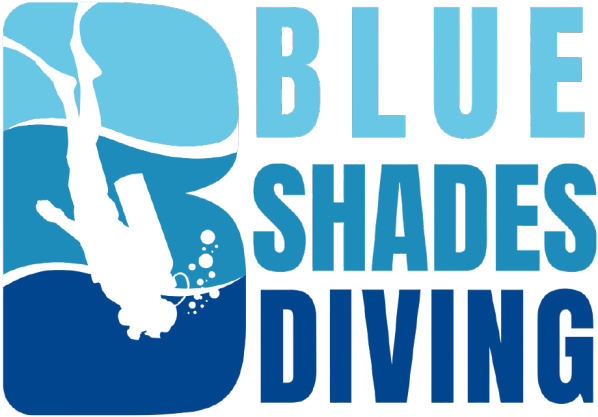A Must-See for Divers in the South Red Sea
The Brother Islands are among the top highlights for divers in the southern Red Sea. For many experienced divers, an Egypt diving vacation wouldn’t be complete without a liveaboard trip to these legendary twin islands. They are easily recognized by the Victorian-era lighthouse that rises from the larger of the two islands. Surrounding the islands are numerous unforgettable dive sites, including two famous wrecks: the Numidia and the Aida. The Brothers are also known as one of the best places in the Red Sea to dive with sharks – including whitetips, silvertips, grey reef sharks, hammerheads, oceanic whitetips, and thresher sharks.
In 1983, Egypt’s offshore islands were declared marine protected areas and have since been part of a national marine park. Among them are the legendary Brother Islands – known in Arabic as El Akhawein. These tiny islands, located about 200 km south of Ras Mohammed and just five minutes apart, are steep-sided cones of volcanic origin.
The Brother Islands are considered some of the most spectacular dive sites not just in the south, but in the entire Red Sea. Their remote location makes them a truly special experience for divers seeking something extraordinary. Barely visible from afar, they would be easy to miss – if not for the imposing 32-meter-high Victorian lighthouse standing tall on the larger island, Big Brother.
Little Brother Island
Little Brother is shaped like a teardrop, sloping from northwest to southeast. It’s surrounded by steep walls, except at the northern tip, where the reef gradually slopes down to a plateau at 40 meters – one of the best spots in the Red Sea for shark diving. Silvertips and grey reef sharks are frequently seen here, and with some luck, even large hammerheads may rise from the depths for a curious look at passing divers.
The eastern and western walls impress not with depth, but with diversity: overhangs covered in black coral, giant gorgonian fans, and a stunning density of soft and hard corals in every color imaginable make these dives truly unforgettable – even when the reef is hard to see behind massive schools of fish.
The current usually runs from north to south, so most dives end on the southern plateau – a wide ledge at about 20 meters. Here, barracudas, dogtooth tuna, and reef sharks are regular visitors.
Big Brother Island
About one kilometer north of Little Brother lies Big Brother – a site known for its incredibly rich marine life. Schools of anthias, glassfish, and sweepers swarm around the steeply descending fringing reef. The walls are densely covered with massive gorgonians and vibrantly colored soft corals.
The southeastern point is especially known for shark encounters: grey reef sharks, whitetip reef sharks, hammerheads, and oceanic whitetips are all frequent sightings. Early morning dives in autumn and winter may even offer the rare chance to spot thresher sharks.
The Wrecks: Numidia & Aida
The Numidia, also known as the “Railway Wreck”, lies near the northeastern tip of Big Brother Island, just below the lighthouse. This 130-meter British cargo ship struck the reef in 1901 on its second voyage to India. Today, its broken bow rests in just 8 meters of water. Two locomotive wheels – part of the cargo – can still be seen on the seabed.
Now completely overgrown with hard and soft corals, the wreck has become a vibrant, living reef. The hull and several masts extend into deeper water. There are several easy penetration points in the shallow section, including cabin entrances and the former raft deck. Below the bridge are the cargo holds and the main mast, which extends down to 45 meters. The stern and propeller lie at 90 meters — well beyond recreational diving limits.
The Aida, was a 75-meter supply ship that sank in 1957 following a collision with Big Brother. The bow rests at 30 meters, the stern at over 60. The engine, located at 7 meters, marks the point where the hull split. Today, the Aida is completely encrusted with coral and teeming with marine life. Its steel structure is open and accessible for experienced divers, including the engine room, winches, and cargo hatches.
Diving Big Brother
Big Brother is usually dived several times during a liveaboard trip. A popular entry point is directly above the Aida wreck, from where divers swim along the island with the sloping reef on their left. It’s worth watching the blue – sharks, barracudas, unicorn fish, and Napoleon wrasse are often seen here. The reef is in excellent condition and covered in soft corals, especially the broccoli-like Lithophyton arboretum.
Another option is to enter near the southern tip of the island, where a small promontory with three to four underwater hills sits at around 35 meters. This is a great place to spot sharks – though due to the depth, no-decompression limits can be reached quickly, making Nitrox a recommended choice.
Perhaps the most impressive way to dive Big Brother is to begin just up-current of the Numidia wreck. After 5 to 10 minutes exploring the wreck, the dive continues along a reef wall that gently curves in and out. Swarms of orange and purple anthias dance around the coral heads, creating the perfect scene for classic Red Sea reef photography.
One eye should always stay on the blue – pelagic visitors may pass by at any moment.
